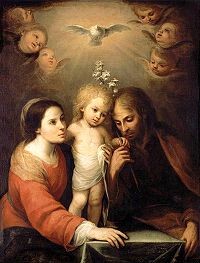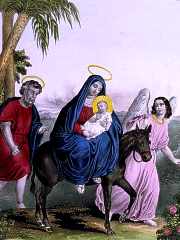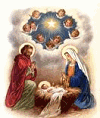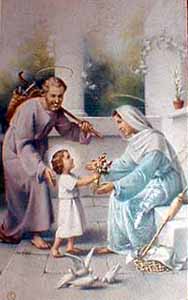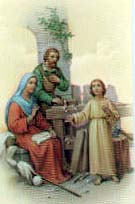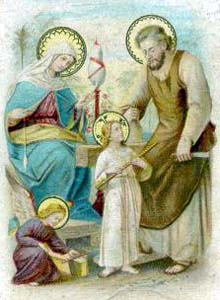The Holy Family
The Incarnation of the Word of God, the Messiah, had to take place as prophesied.
God in His Wisdom decided to have the purest of creatures, the Blessed Virgin Mary as the mother of His only begotten Son. He chose Joseph a chaste and just man to spouse Mary in a special relationship of chastity, where He would care for Mary and the holy infant Jesus.
Mary cared for Jesus, as the most special of mothers, Joseph worked as a carpenter. He provided for Jesus and Mary and protected them.
Devotion to the Holy Family has brought many blessings to families throughout the centuries.
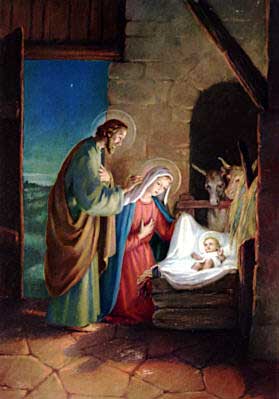
The Feast of the Holy Family is a liturgical celebration in the Roman Catholic Church in honor of Jesus of Nazareth, his mother, the Blessed Virgin Mary, and Saint Joseph, as a family.
Veneration of the Holy Family was formally begun in the 17th century by Mgr François de Laval, a Canadian bishop who founded a Confraternity.
The feast of the Holy Family was instituted by Pope Leo XIII in 1893 on the Sunday within the Octave of the Epiphany; that is to say, on the Sunday between January 7 through January 13, all inclusive (see General Roman Calendar of 1962). The calendar of the 1962 Roman Missal, whose use is still authorized, keeps the celebration on that date.
In the calendar promulgated in 1969, the feast was moved to the Sunday within the Octave of Christmas, between Christmas and New Year's Day (both exclusive), or when there is no Sunday within the Octave (if both Christmas Day and New Year's Day are Sundays), it is held on 30 December, a Friday in such years.
In the 1962 calendar, the feast is always on a Sunday and, if it falls on 13 January, it replaces the Commemoration of the Baptism of the Lord, to which the 1962 calendar assigns that date. It was never a holy day of obligation,[1] but when its celebration falls on a Sunday, there is an obligation to attend Mass on that day.
